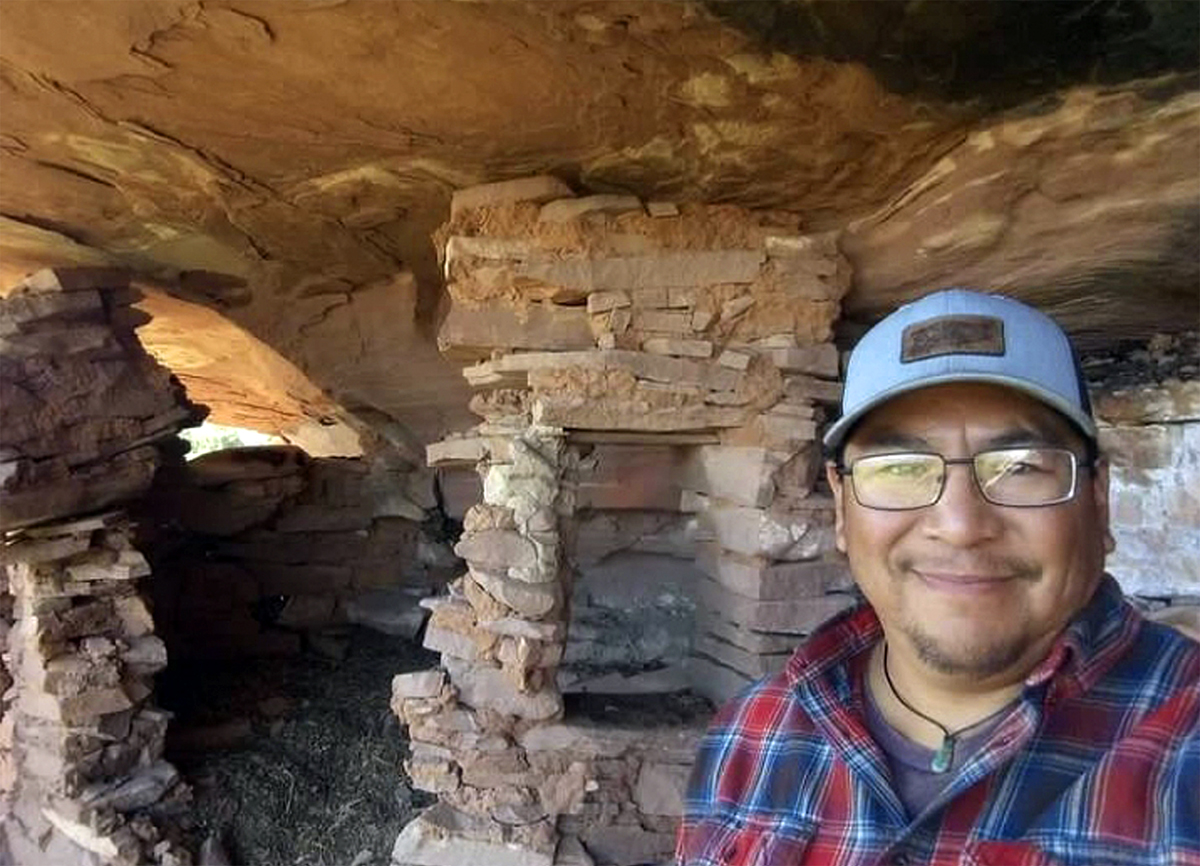Some information may be outdated.
Though Western archaeology typically treats Indigenous ancestral sites as an anachronism, these places embody a living culture and presence for Hopi archaeologist Lyle Balenquah. This week, we speak with Balenquah about his journey into archaeology, and connection with and work on ancestral lands in the Southwest.
Science Moab: How did you first decide to pursue archaeology?
Balenquah: Archaeology had never been considered by me, or anybody in my family or my community, because it has such a stigma from its history with Indigenous communities. Hopi has a very strong remembrance of early anthropologists coming to Hopi and being disrespectful. It was never proposed that anthropology could be a career for a Hopi person.
Then I learned about this program that sought to bring in a new generation of masonry workers to actively preserve and stabilize ancestral sites. I clicked with it because I was working with my hands, it was creative. I was introduced to a large part of who I am as a Hopi person.
Science Moab: What are some differences in approaching archaeology as a Hopi person versus non-Hopi colleagues?
Balenquah: In the university, we were always shown these black-and-white photos of these old white dudes with beards standing at some archaeology site. Those were supposedly the heroes of archaeology and anthropology. I had a hard time identifying with that. It was always outsiders looking at an exotic, timeless culture.
Whereas every time I came back to Hopi, participating in ceremonies, helping my dad and uncles plant our fields, there was the realization that we’re still here, we’re a living culture. We’re not disconnected from our pasts. Those events and histories still influence who we are as modern-day Indigenous peoples.
That’s how I approach my work: I’m not looking at a site that is devoid of humanity or living presence. I think many of my Indigenous colleagues will always state that there is a presence, a living energy associated with these sites.
When we do ceremonies at Hopi, we’re actively continuing these traditions. There’s this long, continuous process of who we are. What I try to impart to my non-Indigenous colleagues is that these are more than just places with potential for scientific information; these are places that we as Indigenous people still return to.
Science Moab: What are your views on the preservation of ancestral sites in the region?
Balenquah: In the early history of preservation in the United States, preservation work utilized foreign materials like steel and rebar, and people rebuilt sites according to what they thought they may have looked like. We’ve come to see that the use of foreign materials and the idea of reconstruction has negative consequences for the structures themselves.
There’s this philosophy within Hopi that speaks of these structures as living entities. We gather these materials from the earth. They have a life cycle. They’re born out of the earth, they serve their purpose, and once that purpose is done, they should be allowed to return to the earth.
Science Moab: Moving forward, how should these perspectives be incorporated?
Balenquah: I would like to see more Indigenous archaeologists. I’ve been fortunate to work with crews from the Ancestral Lands Conservation Corps, an Indigenous conservation program. It was great to work with all these young Indigenous people and get them to think about a career in Indigenous archaeology.
When we write management plans, we should already be thinking about Indigenous values to incorporate. It’s about real-life work, but also increasing the capacity and opportunities for Indigenous people to enter into these fields.
Science Moab: What are the challenges with increased visitation to ancestral sites, and opportunities to change behavior?
Balenquah: Visitation is the biggest impact that we’re seeing at some sites. One way we can address that issue is by education. Having face-to-face interactions and letting people know that they, as visitors, are a part of the issue, but they can also be part of the solution by learning proper site etiquette and the modern-day Indigenous connections we maintain with those places.
It’s not just talking about… sites in the past tense, but continually reinforcing that these are continued connections for Indigenous people.
Science Moab is a nonprofit dedicated to engaging community members and visitors with the science happening in Southeast Utah and the Colorado Plateau. To learn more and listen to the rest of Lyle Balenquah’s interview, visit www.sciencemoab.org/radio. This interview has been edited for clarity.
Appreciate the coverage? Help keep local news alive.
Chip in to support the Moab Sun News.





